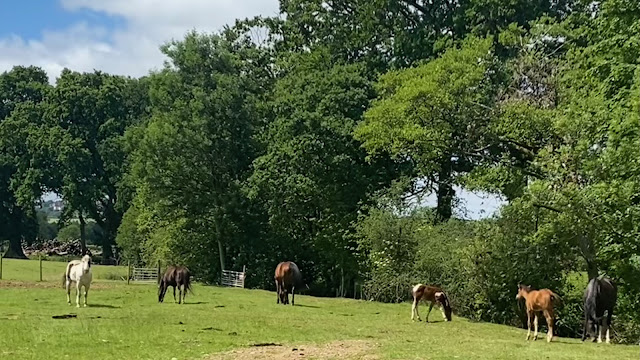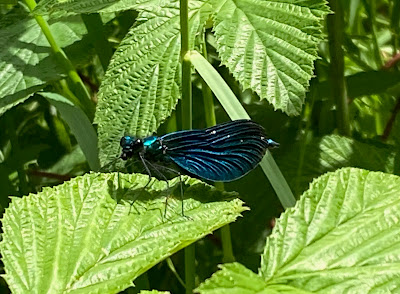I am trying something new in the garden this year, which is to use some of the waste fleece from the mill where I work in different ways. It has been wetter than usual this year, and we seem to have more slugs and snails than ever. I don't use slug pellets, as I enjoy watching the birds here so much, and it just seems obvious that poisoning one of the things that they are going to eat is going to affect them. I want my veg, but not that much.
Over the years I have tried other ways to combat the snails and slugs - beer traps and coffee grinds, which both had some success. The fleece I am using is called greasy waste, wool that has not been scoured and contains lanolin. It may have a bit of sheep marker spray in it. Or even, heaven forbid some sheep poo, but this is all to the good. I have been putting it around the plants that get attacked most - the strawberries in the polytunnel, the courgettes, pumpkins, and squash. It seems to be working well, not blowing away which was a bit of a concern.
I have read online that fleece has other properties that are good. Not only does it help retain heat around the plants, it also can hold 30% of its weight in water, which if the soil is dry it will release if needed, but also soak up water if the weather is wet. So it should mean less watering. If used in larger quantities than I have it will stop weeds growing. It seems like a winner all round.
Another good thing about using fleece is that it adds nutrients (nitrogen and other trace elements) to the soil, particularly when you are planting. Some fleece added to the planting hole will help retain moisture around the roots. I decided to be scientific, and planted half my sunflowers this way, and the other half without, as a control. The experiment failed, as a few days later I think a rabbit got in and ate the lot. I almost had a second take, as every part of every plant was gone. He did not seem to differentiate between those with the fleece and those without, all equally yummy. I may have another try at this with other planting.
Here is my other non-chemical slug destroyer. I have found this toad several times in the garden, and I think he is also keeping the slugs down.
My other use for fleece in the garden this year was stuffing Fergus the scarecrow. I know you may say, but you like the birds, so why make a scarecrow. Fergus is totally ineffective as a scarecrow, and I have seen the odd bird sitting on him, but I do think he may put off the deer that have occasionally invaded the garden. Other years we have stuffed him with anything we could find, but I feel better about using the fleece, knowing that if the odd bit escapes it will probably be put to use by a bird, or perhaps even the thieving rabbit could have a fleece lined burrow.
 |
| I deliberately left the brocoli flowers as the bees were enjoying them so much. |
There are other uses for sheep wool in the garden -
- Small quantities of sheep's wool can also be used in a compost heap, and will decompose to add fertility to the soil.
- I have seen people use fleece to line hanging planters, which I might give a go next year.
- Woollen garden twine is a really great eco-friendly alternative to imported jute or plastic garden twine.
I was lucky this year to have a source of wool, but I know there are a lot of farmers for whom the wool sheared from their sheep is a waste product. I met a farmer last year whose wool was not good enough to process into knitting wool, who was burning it. I do wish there was a way to get farmers in this situation and gardeners together, as it really is good to garden in a green woolly way.











